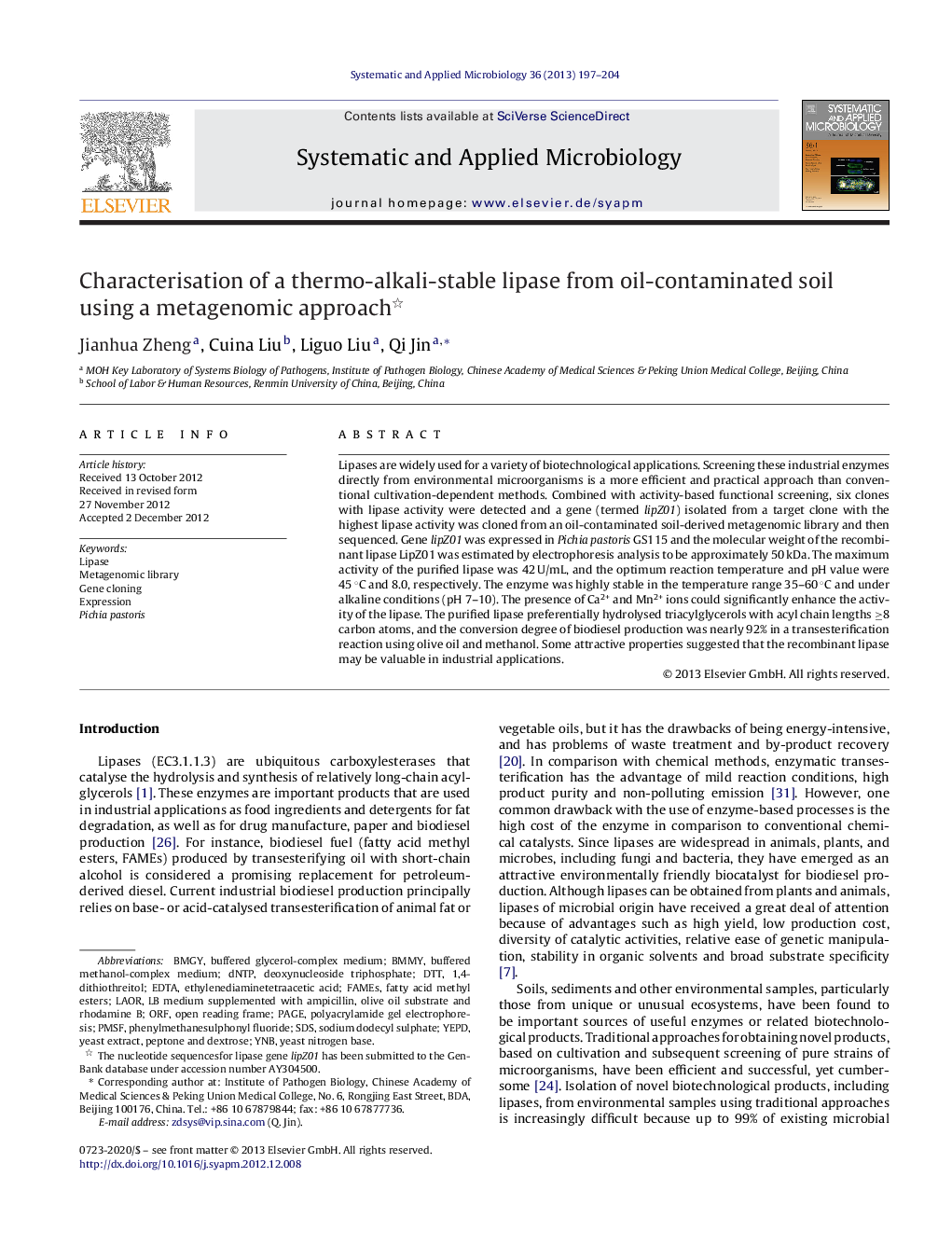| Article ID | Journal | Published Year | Pages | File Type |
|---|---|---|---|---|
| 2063801 | Systematic and Applied Microbiology | 2013 | 8 Pages |
Lipases are widely used for a variety of biotechnological applications. Screening these industrial enzymes directly from environmental microorganisms is a more efficient and practical approach than conventional cultivation-dependent methods. Combined with activity-based functional screening, six clones with lipase activity were detected and a gene (termed lipZ01) isolated from a target clone with the highest lipase activity was cloned from an oil-contaminated soil-derived metagenomic library and then sequenced. Gene lipZ01 was expressed in Pichia pastoris GS115 and the molecular weight of the recombinant lipase LipZ01 was estimated by electrophoresis analysis to be approximately 50 kDa. The maximum activity of the purified lipase was 42 U/mL, and the optimum reaction temperature and pH value were 45 °C and 8.0, respectively. The enzyme was highly stable in the temperature range 35–60 °C and under alkaline conditions (pH 7–10). The presence of Ca2+ and Mn2+ ions could significantly enhance the activity of the lipase. The purified lipase preferentially hydrolysed triacylglycerols with acyl chain lengths ≥8 carbon atoms, and the conversion degree of biodiesel production was nearly 92% in a transesterification reaction using olive oil and methanol. Some attractive properties suggested that the recombinant lipase may be valuable in industrial applications.
